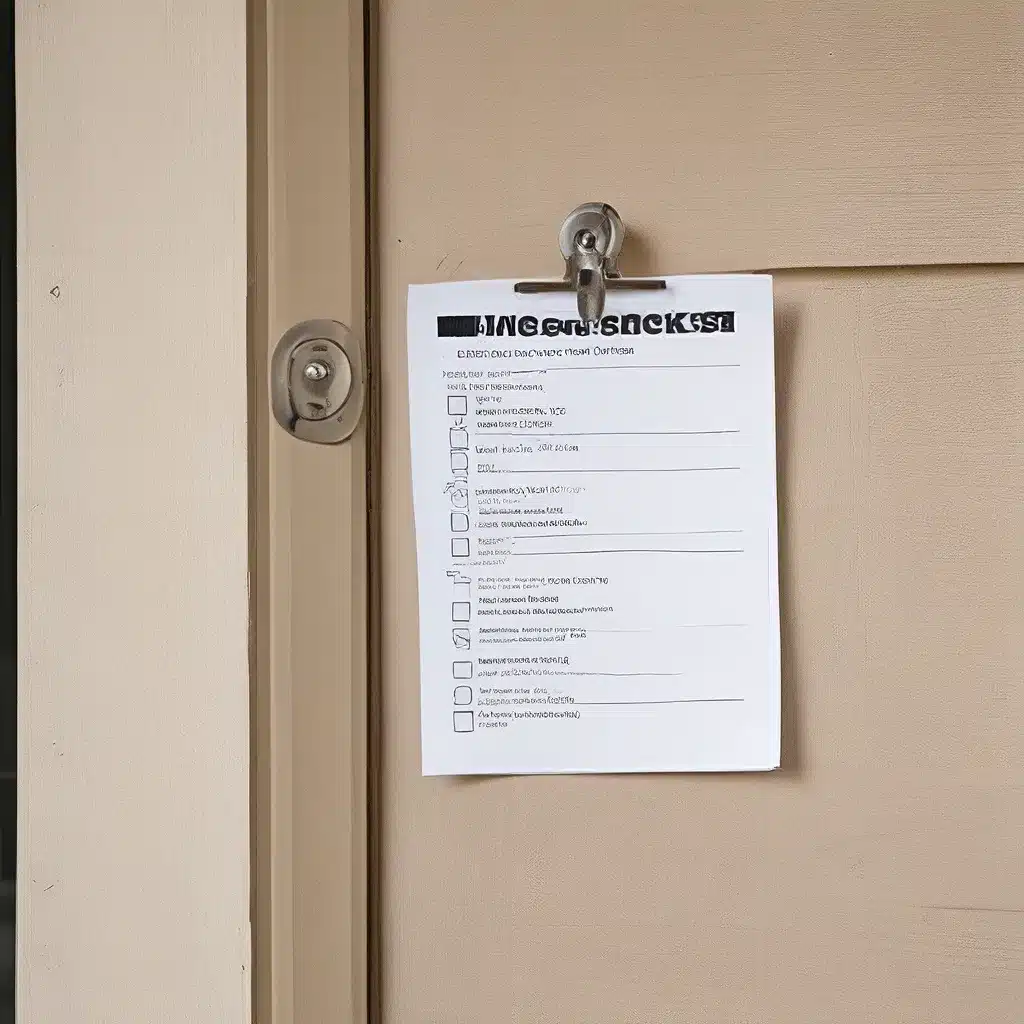
When it comes to home safety, I’m a stickler. As the old saying goes, “an ounce of prevention is worth a pound of cure.” And let me tell you, I’ve seen some pretty harrowing home accidents in my day – from falls that landed folks in the hospital for weeks to electrical fires that reduced entire rooms to ashes. That’s why I always keep a watchful eye on my own abode, constantly on the lookout for potential hazards.
Safeguarding Your Entryways
Let’s start outside, where the first line of defense against uninvited guests and environmental threats begins.
Of course, securing the perimeter is only half the battle. What good are fortified entryways if the interior of your home isn’t equally well-protected? That’s why I always recommend investing in a reliable home security system. Research shows that about 93% of all crime experienced by adults 65 and older is property crime – things like theft, burglary, and auto theft. Having that extra layer of surveillance and alert capabilities can give you genuine peace of mind, whether you’re home or away.
Navigating Your Indoor Spaces
Alright, now that the outside is squared away, let’s venture inside.
Lighting is another biggie when it comes to indoor safety. Swapping out those old, dim bulbs for bright LED alternatives can make a world of difference – not just for illuminating potential hazards, but also for folks with vision challenges like cataracts. And don’t be afraid to get a little creative with your lighting solutions, like using motion-sensing nightlights in hallways or under-cabinet strips to guide your way.
Ensuring Bathroom Bliss
Now, I know what you’re thinking – the bathroom? Really? But let me tell you, this often-overlooked room can be a veritable minefield of safety hazards.
That’s why I always make a beeline for the bathroom when doing my home safety checks. Slip-resistant mats, strategically placed grab bars, and even a walk-in tub (if your budget allows) can make all the difference in keeping those precarious trips to the loo safe and secure. And don’t forget about the little things, like making sure your hot water heater is set to a temperature that won’t scald sensitive skin.
Mastering the Kitchen
Ah, the kitchen – the heart of the home and a veritable playground of potential dangers. From scorching stovetops to slippery floors, this room requires some serious TLC when it comes to safety.
Of course, it’s not just fire that we’ve got to watch out for in the kitchen. Cuts and falls are also major concerns, which is why I always recommend investing in some cut-resistant gloves and a non-slip cutting board. And let’s not forget about those tricky cabinet handles and drawers – if they’re giving you trouble, consider swapping them out for more user-friendly options, like D-shaped pulls that are a breeze to operate.
Securing Your Sleeping Spaces
Last but certainly not least, we come to the bedroom – the place where we recharge our batteries and (ideally) get a good night’s rest. But you know what they say: “Sweet dreams are made of this…” – and by “this,” I mean a carefully curated sleep sanctuary that prioritizes safety and comfort.
Of course, the bedroom is also a prime spot for fire hazards, what with all those flammable fabrics and electronics. That’s why I religiously check my smoke detectors, keep a fire extinguisher close at hand, and steer clear of any sketchy-looking cords or appliances.
Embracing Assistive Technology
Now, I know what you’re thinking – all of this safety stuff sounds like a lot of work! But fear not, my friends, because there’s a whole world of amazing assistive technology out there to make our lives easier (and, more importantly, safer).
Medical alert systems, for example, can be a literal lifesaver in the event of a fall or other emergency. With the push of a button, you can summon help from a 24/7 monitoring center, who can then contact your pre-designated emergency contacts. And for those of us who like to stay active and on the move, there are even GPS trackers that can help keep tabs on our location.
And let’s not forget about the power of voice-controlled smart home devices.
Bringing It All Together
Whew, that’s a lot of ground to cover, but I promise it’s all worth it when it comes to keeping your castle secure and your mind at ease. The team at Reading General Contractor is always here to lend a hand, whether you need help with home modifications, installation of assistive tech, or just a friendly ear as you navigate the world of home safety.
So, what are you waiting for? Grab that checklist, put on your safety goggles, and let’s get to work! Your home deserves to be a sanctuary, a place where you can truly relax and feel confident in your surroundings. And with a little elbow grease and some strategic upgrades, I guarantee you’ll be well on your way to a safer, more secure abode in no time.
Related posts:
No related posts.




